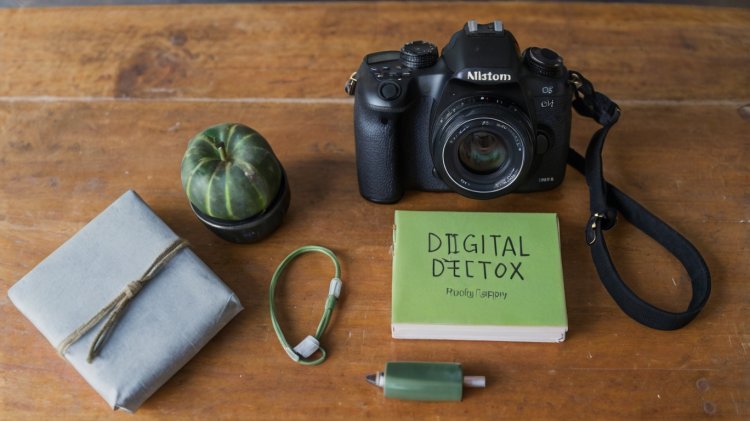4 Powerful Benefits of a Digital Detox for Your Health and Well-Being
Explore the transformative benefits of a digital detox for your mental, physical, and emotional health. From reducing stress and improving sleep to fostering better relationships, discover how unplugging from technology can lead to a more balanced and fulfilling life. Learn practical tips for implementing a successful digital detox.

Introduction: Why You Need a Digital Detox
In today’s hyperconnected world, technology dominates our lives. While digital devices make life easier by providing instant access to information, entertainment, and communication, their overuse can take a toll on our health. Ever find yourself endlessly scrolling through social media or checking emails late into the night? You’re not alone.
A digital detox is the practice of intentionally stepping away from technology for a set period to focus on the present moment, reconnect with loved ones, and improve overall well-being. This article explores the science-backed benefits of a digital detox and offers practical steps to get started.
1. Improved Mental Health
Constant exposure to screens and social media can lead to stress, anxiety, and even depression. Studies show that excessive technology use can create feelings of inadequacy through social comparison and FOMO (fear of missing out).
Benefits of unplugging:
- Reduced stress: Limiting email and social media use can decrease stress levels.
- Boosted self-esteem: Stepping away from social networking allows you to focus on your achievements rather than comparing yourself to others.
- Improved focus: Disconnecting from notifications can enhance your ability to concentrate on meaningful tasks.
Tip: Start small by scheduling phone-free periods during your day, like during meals or an hour before bedtime.
2. Better Sleep Quality
Did you know that the blue light emitted by screens suppresses melatonin production, the hormone that regulates sleep? Watching videos, scrolling through feeds, or checking emails late at night can lead to insomnia and poor-quality sleep.
How a digital detox helps:
- Promotes restful sleep: Turning off screens 1–2 hours before bedtime helps your body wind down naturally.
- Improves mental clarity: A good night’s sleep rejuvenates your mind, improving cognitive function and emotional resilience.
Tip: Keep devices out of the bedroom and consider using a traditional alarm clock instead of your phone.
3. Relief from Digital Eye Strain and Physical Ailments
Spending hours staring at screens can cause digital eye strain, characterized by dry eyes, blurred vision, and headaches. Prolonged use of mobile devices may also lead to neck and back pain, commonly referred to as "text neck."
Benefits of reducing screen time:
- Eases eye strain: Taking breaks helps reduce symptoms like dryness and irritation.
- Prevents posture-related issues: Stepping away from screens encourages better posture and reduces muscle tension.
Tip: Follow the 20-20-20 rule: every 20 minutes, look at something 20 feet away for 20 seconds.
4. Stronger Relationships and Social Bonds
Technology often distracts us from the people around us. Whether it's checking emails during family dinner or scrolling through Instagram while hanging out with friends, excessive screen time can hinder meaningful connections.
How a digital detox helps:
- Improves communication: Being present fosters deeper conversations and emotional connections.
- Strengthens bonds: Unplugging allows you to spend quality time with loved ones without digital distractions.
Tip: Create tech-free zones, such as the dinner table or during family outings, to focus on in-person interactions.
Tips for a Successful Digital Detox
- Set Clear Goals: Decide what you want to achieve from your detox, such as better sleep or more family time.
- Start Small: Begin with manageable steps, like phone-free evenings or screen-free meals.
- Use Digital Detox Apps: Paradoxically, apps like Forest and Freedom can help you limit screen time.
- Plan Offline Activities: Replace screen time with hobbies like reading, gardening, or exercising.
- Create Boundaries: Establish specific times for checking emails or using social media.
- Get Support: Share your detox plan with friends or family for accountability.
FAQs
1. What is a digital detox?
A digital detox involves taking a planned break from electronic devices to focus on physical, mental, and emotional well-being.
2. How long should a digital detox last?
The duration depends on your goals. It can range from a few hours to several weeks. Start with short, manageable breaks and gradually increase the time.
3. Will a digital detox help with anxiety?
Yes, reducing screen time can lower stress and anxiety by minimizing social comparison and providing time for mindfulness and relaxation.
4. Can I still use my phone for essential tasks during a digital detox?
Absolutely! A digital detox doesn’t mean eliminating all tech use—it’s about reducing unnecessary screen time. Use your phone for essential activities like calls or navigation.
5. How do I manage FOMO during a digital detox?
Focus on the benefits of unplugging, such as improved relationships and better mental health. Engage in fulfilling offline activities to reduce feelings of missing out.
Conclusion: Embrace the Power of Unplugging
A digital detox is more than a trendy concept—it’s a vital practice for maintaining mental clarity, emotional balance, and physical health in our tech-driven world. By taking intentional breaks from screens, you can enhance your well-being, deepen your relationships, and rediscover the joys of the offline world.
Take the first step today and experience the transformative power of disconnecting to reconnect.









